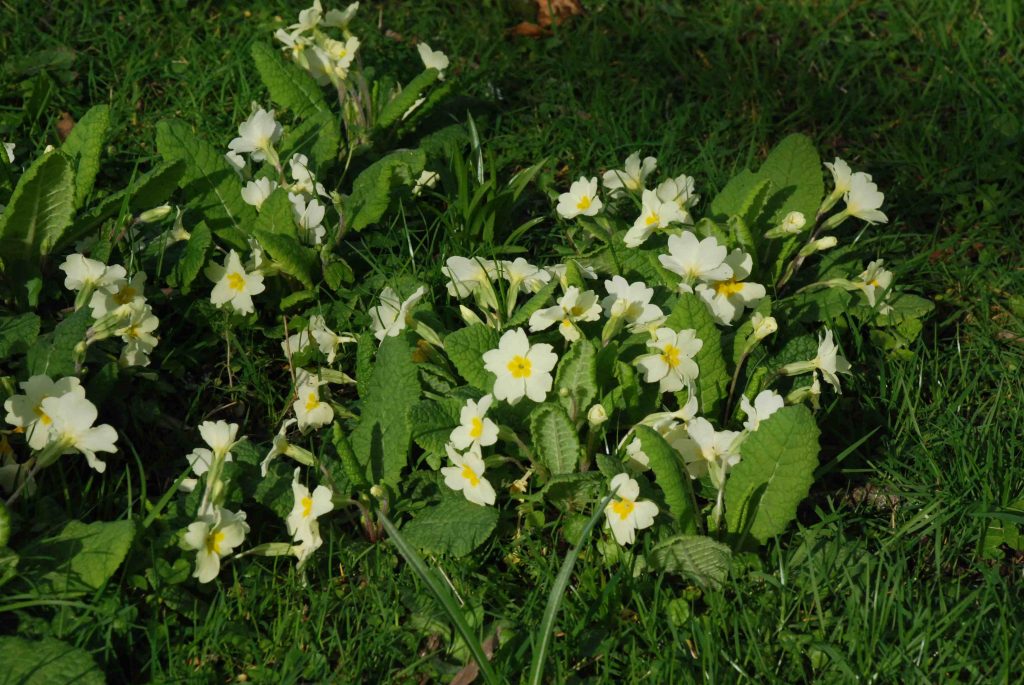
We all understand the importance of protecting our wildflowers but one flower that we are all aware of, at this time of year, is the native primrose (Primula vulgaris). This delightful plant has entranced gardeners for centuries and was welcomed into our gardens. It was crossed with cowslips to make polyanthus and with European species to expand the range of colours beyond what anyone would have ever guessed in Elizabethan times when primroses were already popular garden plants.
In the wild, primroses grow best in light shade while cowslips prefer sunnier, better-drained areas. Both grow on slopes and primroses often thrive on banks under hedges. In damp shady soils they even compete with the weak grass.
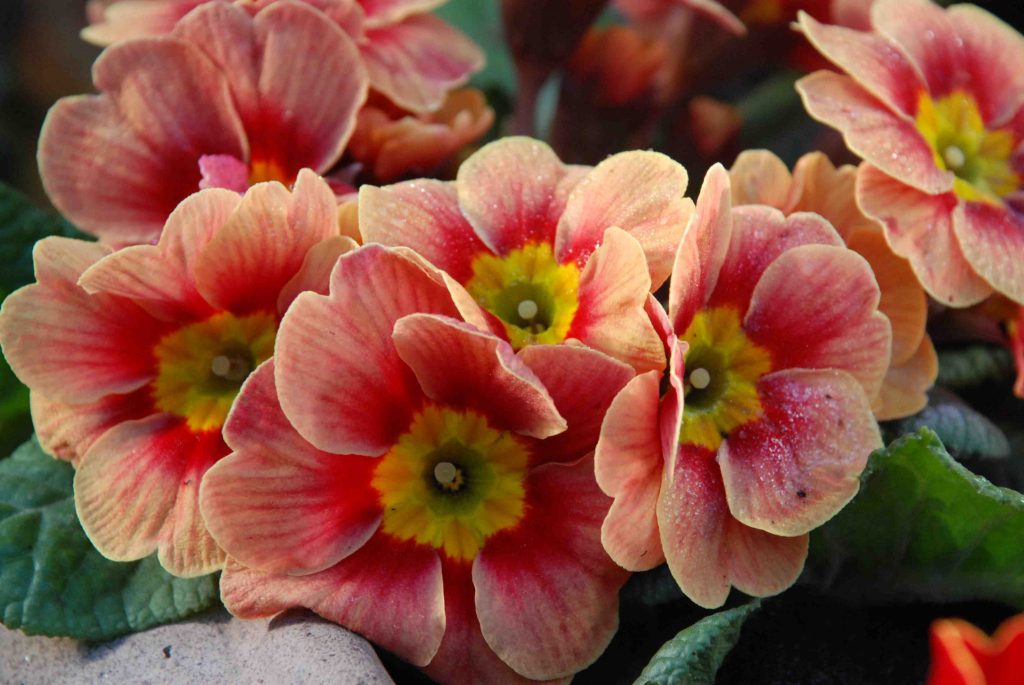
Pop into Nags Hall any time in the next month and you will be dazzled by the pots of primroses, in full bloom, in every imaginable colour. Visit on a warm day and you will be greeted by sweet fragrance too.
These potted primroses with massive flowers, are like pedigree pets: a marvel of breeding but not terribly sturdy. In some cases the flowers are so large that they cannot withstand harsh weather and the plants do not always live for a second year. So buy them as colourful, frost proof bedding to cheer you up. Or fill a bowl with them in the sunroom or just pick your favourite and enjoy it on the kitchen windowsill.
Now here I need to make a confession. Incredible though these are, I am not a fan. I think the flowers are too big and have lost all the grace of the wild primrose.
I prefer polyanthus anyway, with bunches of flowers held above the leaves – they are better for garden display too.
And fortunately there are plenty of alternatives that prove that biggest is not always best. Look out for pots and trays of polyanthus in unusual colours and smaller flowers that are just perfect for beds, borders and patio pots.
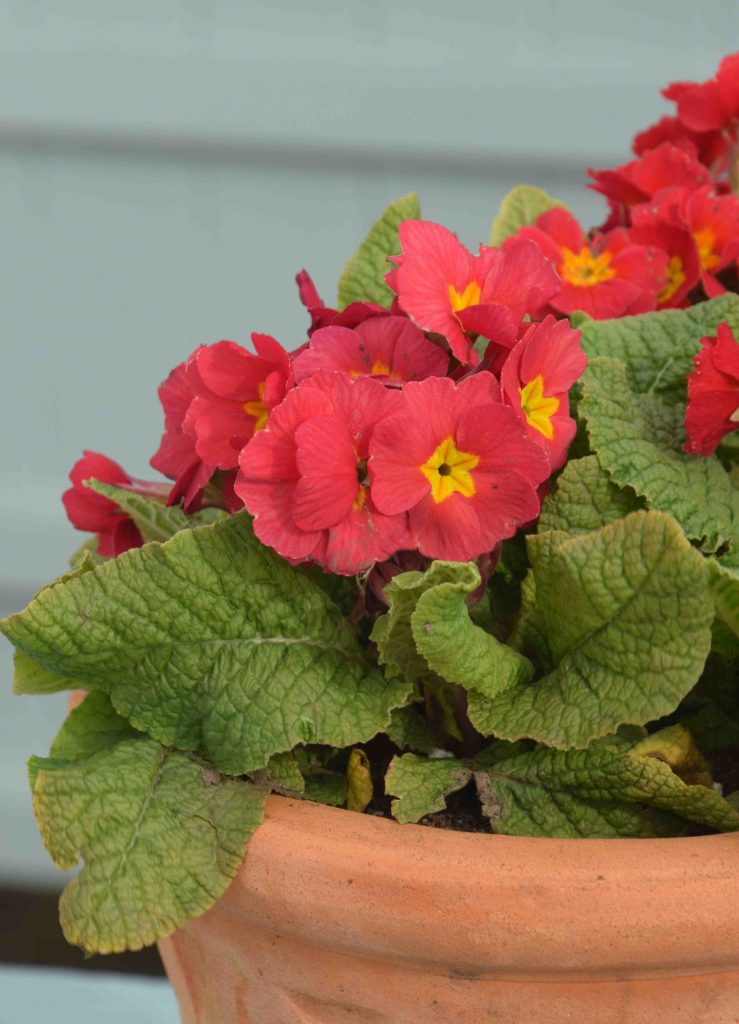
I am a big fan of the Kennedy Irish Primroses which have been specially bred to be long-lasting garden plants. You can read more about them on my blog here.
Some are true primroses, some have dark purple leaves and all have been bred from some of the ancient, traditional kinds so they combine vigour with old-fashioned charm.
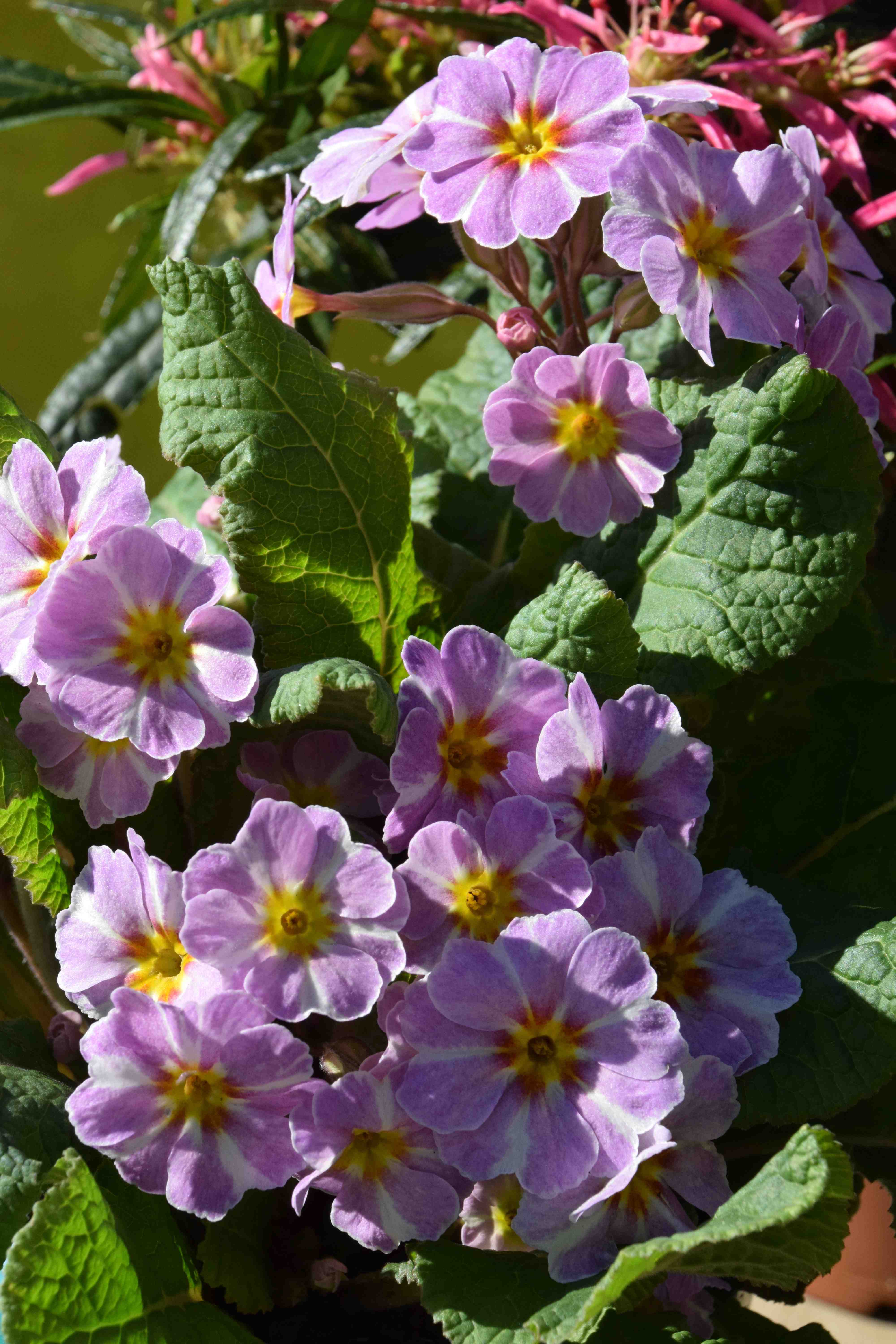
My favourite is ‘Avondale’ (above) which is compact but has masses of delicate, lilac flowers. It copes well with clay soils and forms low mats of growth. Next on my list is ‘Moneygall’ (below) which has typical primrose-coloured flowers but with one flower tucked into another to give a frilly, double effect. I have some planted under Sorbaria ‘Sem’ and the combination works well.
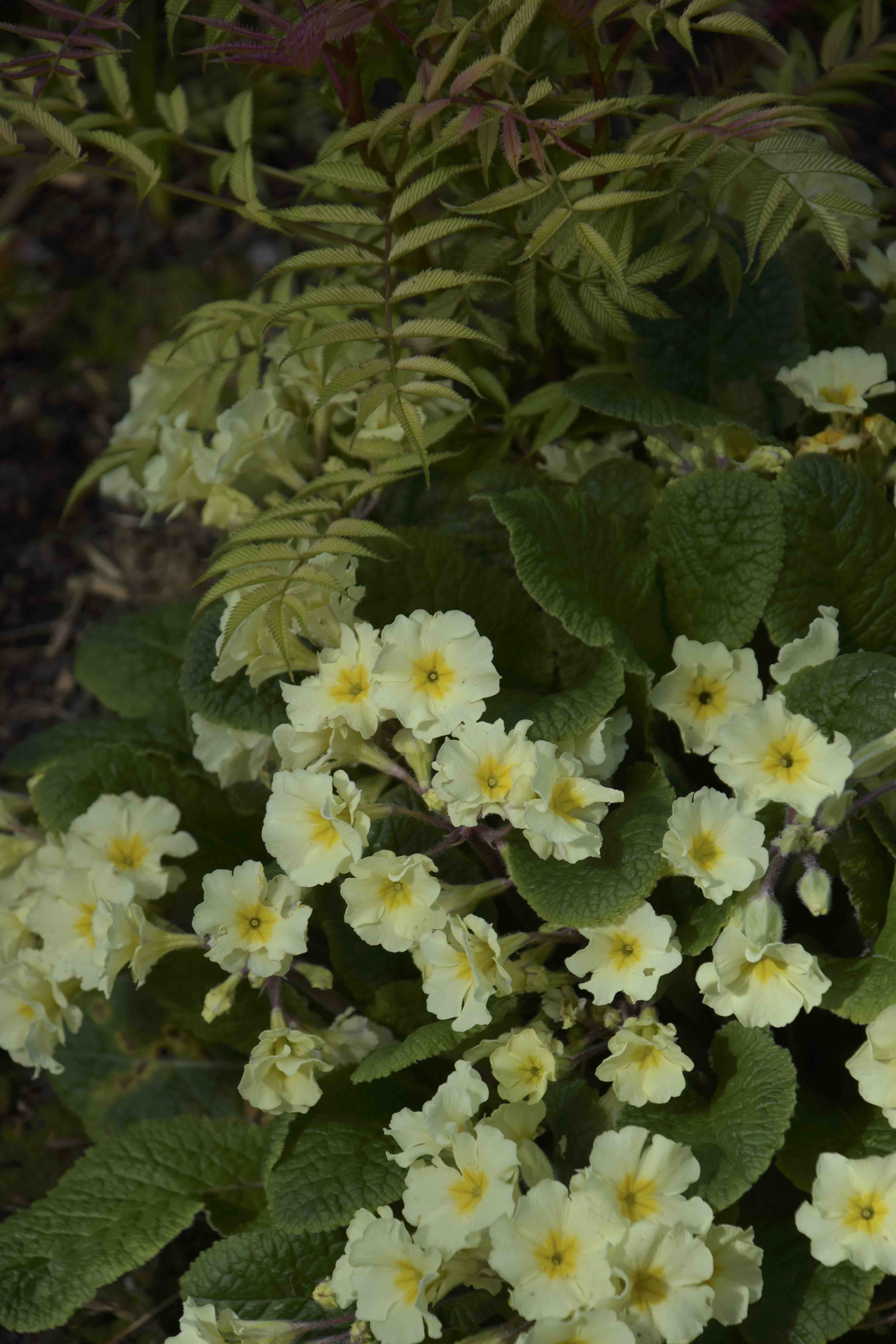
All these perennial primroses can live for ever but, they tend to grow out of the soil and die if they are ignored. You should divide them every year or two. The easiest time to do this is autumn though you can do it in early spring too. I do it after flowering but you must be prepared to water them until they are well rooted or they will die.
When dividing, split the plants into sections. Some have rather long stems that grow along the surface. Replant them so they are deeper and can root from these stems.
The big-flowered primroses are best used in pots with little competition and just enjoyed as bright splashes of colour. The more perennial kinds are easier to fit into borders where you can enjoy them below shrubs, among hellebores and hostas and with spring bulbs, all of which you can buy now for an instant woodland planting.